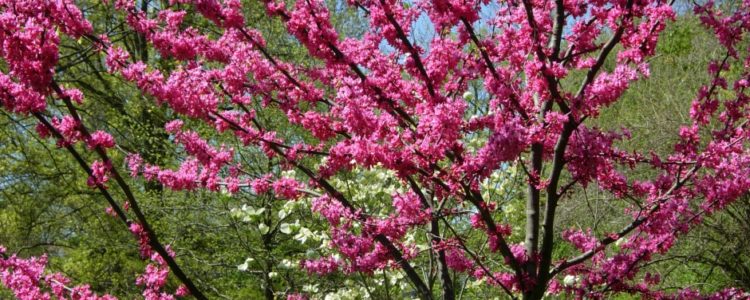Eastern Redbud trees, Cercis canadensis, have been one of my favorite trees since 1981. That was the year I rented a cabin on an idyllic homestead in Tylersport. I traveled each day from my little cabin, crossed a trout stream, and then drove to Warminster. There I worked as horticulturist for W. Atlee Burpee Seed Company, in a windowless building with cinderblock walls. My boss greeted me every morning with a “hello darling!” while she blew a big puff of smoke into my face and critiqued the typing errors I made with a sticky-keyed typewriter answering customers’ letters.
Coming home in spring was like falling down the rabbit hole. I drove across the trout steam, traversed around a diabase boulder the size of a Volkswagen Beetle, and was swallowed by a world of natural beauty magnified by ten because of where I had just come from. Redbuds, Dogwoods and Virginia Bluebells peppered the woodland.
Eastern Redbuds are native trees found from Massachusetts to northern Florida. Their magenta flowers and dark bark are unrivaled for spring exuberance. Redbuds prefer full sun to light shade, are adaptable to most soil types, but will thrive in well-drained deep soil. They do best when transplanted as a young and dormant tree. There are many cultivar selections available for you to pick from, such as ‘Forest Pansy’ with purple foliage, ‘Appalachian Red’ with its neon pink flowers, and even a few white varieties…but why when the native tree speaks volumes all by itself?
With an ultimate size of 20 to 30 feet high by 25 to 35 feet wide, Redbuds fit into almost any garden. Native Dogwoods bloom the same time as Redbuds. The white Dogwoods and chartreuse spring canopy work like Prozac to calm down the explosion of color and create an impressionistic landscape. This natural plant combination translates into many of my garden designs today.
